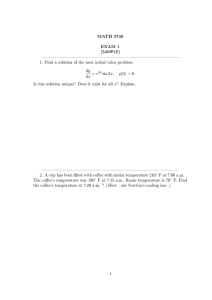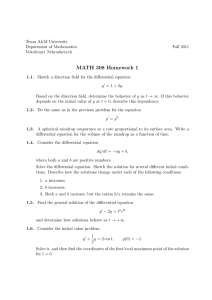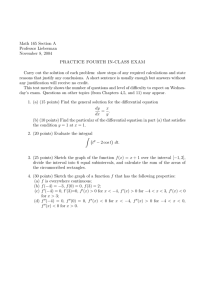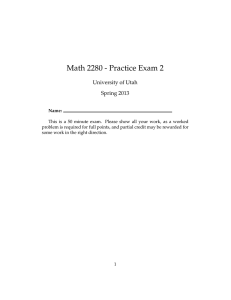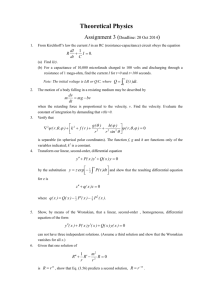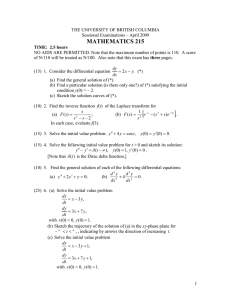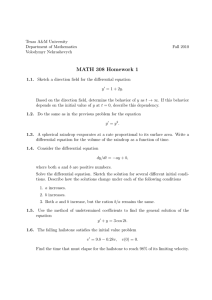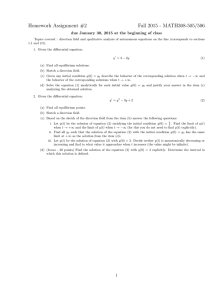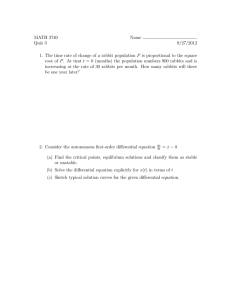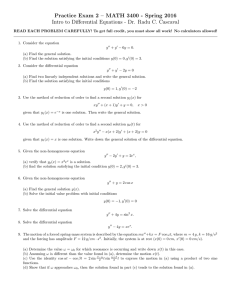MIDTERM MATH263, MAY 2013
advertisement
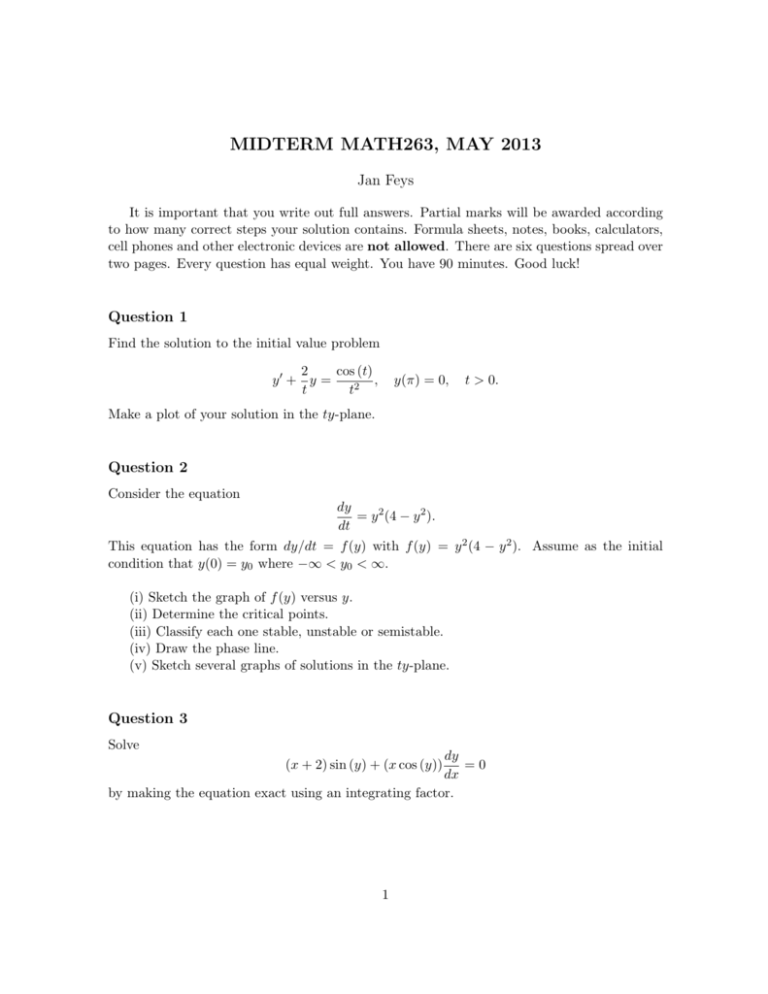
MIDTERM MATH263, MAY 2013 Jan Feys It is important that you write out full answers. Partial marks will be awarded according to how many correct steps your solution contains. Formula sheets, notes, books, calculators, cell phones and other electronic devices are not allowed. There are six questions spread over two pages. Every question has equal weight. You have 90 minutes. Good luck! Question 1 Find the solution to the initial value problem 2 cos (t) y0 + y = , t t2 y(π) = 0, t > 0. Make a plot of your solution in the ty-plane. Question 2 Consider the equation dy = y 2 (4 − y 2 ). dt This equation has the form dy/dt = f (y) with f (y) = y 2 (4 − y 2 ). Assume as the initial condition that y(0) = y0 where −∞ < y0 < ∞. (i) Sketch the graph of f (y) versus y. (ii) Determine the critical points. (iii) Classify each one stable, unstable or semistable. (iv) Draw the phase line. (v) Sketch several graphs of solutions in the ty-plane. Question 3 Solve dy =0 dx by making the equation exact using an integrating factor. (x + 2) sin (y) + (x cos (y)) 1 Question 4 Solve the initial value problem 4y 00 − y = 0, y(0) = 2, y 0 (0) = β. Here β is a real constant. Then find β such that the solution approaches zero as t → ∞. Question 5 Use the method of variation of parameters to find a particular solution of the differential equation t 4y 00 − 4y 0 + y = 16e 2 . Then check your answer by using the method of undetermined coefficients. Question 6 The differential equation (1 − x2 )y 00 − 2xy 0 + α(α + 1)y = 0 is known as Legendre’s equation. Here α is a real constant. (i) Accurately classify this ordinary differential equation. (ii) Find the Wronskian of the solutions y1 (x) and y2 (x) without solving the equation. (iii) In all that follows, assume α = 0. We will solve the resulting second order equation by reducing it to a first order equation. Define u(x) = y 0 (x). Write down the differential equation for u(x) and solve it to find u(x). Then solve for y(x). (Hint: you will need to integrate using partial fractions.) 2
